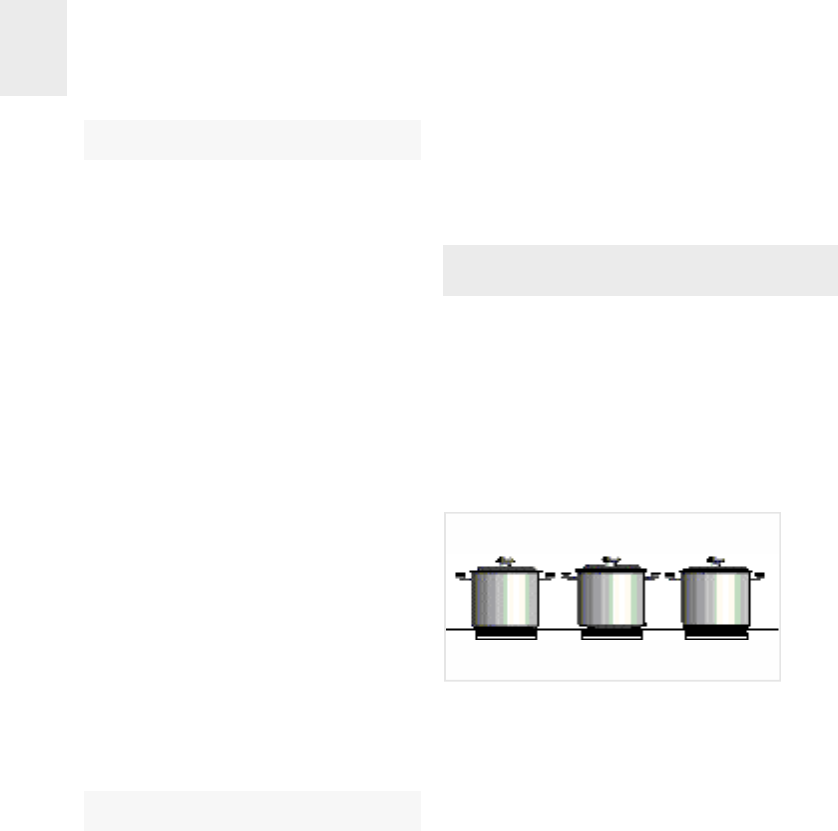
GB
34
Cleaning and care the burners
* The grids should be cleaned with a non-
abrasive scourer when they have cooled
down.
* The burners - the grooves in particular -
should be cleaned at regular intervals;
they should be put into warm, soapy
water and cleaned with a scourer or a
stiff brush.
* Do not clean the enamel diffusing co-
vers while they are still hot. Abrasive
products can cause damage: vinegar,
coffee, milk, salty water and tomato juice
that have lengthy contact with the ena-
mel surfaces.
* When cleaning the appliance with the
burners removed, care should be taken
not to allow liquid or other objects to get
into the injector openings.
* When cleaning, do not use products that
can harm aluminium, such as soda, oil, etc.
Note: Whenever you replace a burner,
you should check that all of the parts
are properly in place. A part that is not
in the right place can cause poor com-
bustion and/or overheating.
* Steam-based appliances should not be
used to clean the hob.
Mantaining the VT DUAL.1
Whenever the gas taps are removed, you
should change the washer that is between
the taps and the supply pipe. The burners
are working properly when their flame is
stable and a greeny-blue colour. If the tip
of the flame is yellow, the burners need to
be cleaned; if the problem persists, contact
the Technical Service.
In order to guarantee that the gas installa-
tion is properly sealed and that the burners
are working properly, the hob needs to be
inspected by specialised technical service
personnel at least once every 4 years.
Note: Any alteration or adjustment nee-
ded by the appliance should be made by
authorised technical personne
Advice on using the
hotplates effectively
In order to achieve the best results from
cooking, the following guidelines should
be followed:
* Use pans with a flat base, as the greater
the surface contact between the pan
and the glass, the greater will be the
heat transmission. Figure 14 shows how
pans that are dented or concave have a
smaller contact surface.
* We recommend the use of heavy pans so
that the base is more difficult to dent.
* The use of pans with a diameter which is
smaller than that indicated in the heating
area is not recommended.
* Make sure that the pans are well cen-
tred on the outlines shown on the hea-
ting area.
* Dry the pans’ bases before putting them
on the glass ceramic hob.
* Do not leave any plastic object or uten-
sil, or any aluminium foil, lying on the
glass hob.
* Do not drag pans with corners or edges
that could damage the glass.
* Do not use the glass ceramic hob wi-
thout a pan on the area that is switched
on.
* Do not cook with plastic pans.
Right Wrong
Wrong
fig. 14


















